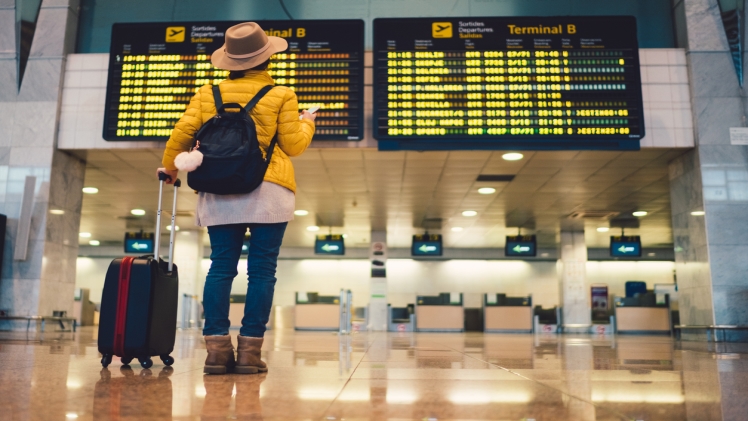Migration is one of the key issues of our time, with millions moving from one country to another. However, not all migrants are refugees or people escaping war-torn countries: there are plenty of other reasons people may migrate to a new country. In this post, we’re going to list ten things that you may not know about migration and what it’s like once they arrive in their new home.
1. Migrants Who Arrive by Plane Usually Have Better Opportunities Than Those Who Come by Boat
As a guide to the differences between various migration methods, the University of Oxford’s Migration Observatory has a huge amount of data on migrant arrivals. Its research shows that people using planes and land routes to get to other countries usually have better access to services, are more likely to find work, and are far less likely to be subject to exploitation or trafficking. Similarly, people who arrive by boat are more likely to be living below the poverty line.
2. At Least Two-Thirds of African Migrants Are Seeking A Better Life
“African migrants tend to move from poor countries to rich ones,” says Ben Smilowitz, a research associate at the Migration Policy Institute. “The reason for that is education and jobs: African migrants often want to earn more money so they can send their children to school, and they want better jobs that enable them to send their kids to university.”
3. There Are As Many Migrants In Europe As In North America, And More Than In Asia
In recent years, there’s been a huge increase in the number of people moving from Africa to Europe. “Since 2000, the number of international migrants worldwide has increased by over 50 million people. Europe and Asia together account for nearly two-thirds of that growth,” says Smilowitz. “No other region has seen a bigger increase in migration.”
4. Half Of The World’s Migrants Are In The Middle East And North Africa
As mentioned above, most Middle Eastern migrants move to Europe, while Africa sends its citizens to the Middle East and Europe. Many migrants in the Middle East are moving to richer countries. “Migrants in Lebanon and Turkey, who tend to be people within the middle class of these countries, are leaving for Europe.”
5. Most People Who Migrate Are Younger Than 35
Migrants usually tend to be people who are between 18 and 34, Smilowitz explains. “In some cases, they can’t get jobs back in their home countries, so they look elsewhere. Other times they want to pursue opportunities. Older migrants will often move because of family or love.”
6. The Most Common Reason To Migrate Is For Work
According to Smilowitz, most migrants move to a new country to find work. This means that they’re likely to be employed once they arrive – so long as their reasons for leaving their home country don’t make it hard for them to find employment.
7. Some People Are So Poor They Are Forced To Move
some people are destitute and desperate to escape poverty. “There’s a lot of violence, abuse, and exploitation in these countries – no one should think that they can get away with leaving just because they have enough money to go away,” Smilowitz says. “Fifty percent of the migrants who enter Europe are fleeing persecution, violence, or other abuses – but only a quarter of those coming from sub-Saharan Africa. That’s because the majority of [migrants from sub-Saharan Africa] have a job or are looking for one.”
8. The Majority Of Migrants Are Single Men
According to Smilowitz, this is because single men often move for work, allowing them to send money back to their families and make a better life for their children. “Many are also studying or going to school in their new countries. It’s women and children who tend to move with refugees who have lost everything they have.”
9. Migrants Are Happiest In Canada, UK, And Australia
The World Happiness Report 2016, published by the Sustainable Development Solutions Network for the United Nations, analyzed data about migrants using the Gallup World Poll and found that migrants in wealthy countries were happier than those in developing countries. “Britain and Canada had the highest levels of happiness among migrants,” says the report. “Australia and the United States also ranked highly.”For more information click here.
10. Not All Migrants Have Good Experiences In Their New Places Of Residence
Smilowitz points out that not all migrants have positive experiences in their new countries. “Some people have a very difficult time when they move to another country. There are also some countries where there are problems with the government or where people aren’t interested in migrants moving there. If you’re a black person living in the US, for example, you can’t get a job without documentation.”
Conclusion
Becoming a migrant takes courage and determination, and even after people have migrated to their new country, they may still have to deal with prejudice and discrimination. However, most people who migrate are doing so to make a better life for themselves – if they didn’t believe that it was a real possibility, they wouldn’t do it
About the Author:
Matt McGrath is an avid traveler and a prominent writer in the blogging community. He has been to more than 50 countries. While he loves discovering new cultures and adventures, he is also passionate about sharing practical tips with his followers. If you love to travel and adventure, we recommend that you read and follow all his articles! More about him on his website.

